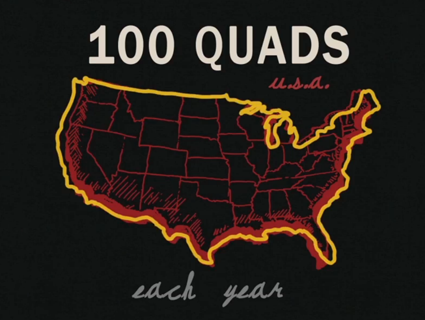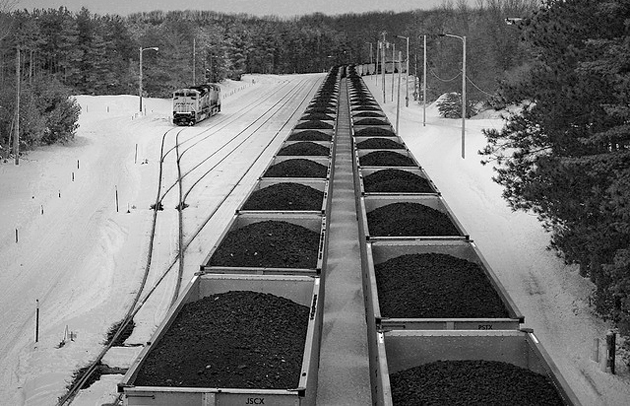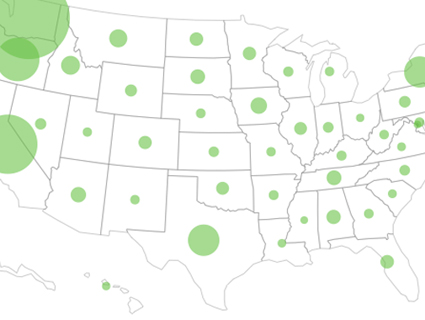This story and video first appeared on The Atlantic website and is reproduced here as part of the Climate Desk collaboration.
The key technologies behind the US natural gas boom are hydraulic fracturing (fracking) and horizontal drilling. For a good look at the way these processes are used to access shale deposits, check out this interactive infographic from National Geographic.
To get an outline of shale gas itself, here’s the overview provided by the US Energy Information Administration. The origins of fracking extend into the 19th century, but it’s only in the last 30 years that much progress was made, according to the EIA.
Deposits are globally abundant, too, though it’s too early to say whether a US style take-off will be seen elsewhere in the world:
Because they have proven to be quickly producible in large volumes at a relatively low cost, shale/tight oil and shale gas resources have revolutionized US oil and natural gas production, providing 29 percent of total US crude oil production and 40 percent of total US natural gas production in 2012. However, given the variation across the world’s shale formations in both geology and above-the-ground conditions, the extent to which global technically recoverable shale resources will prove to be economically recoverable is not yet clear. (EIA report)
The gas boom is so big, it’s turned into a glut, and the United States is gearing up to export liquefied natural gas (LNG) outside North America. Energy expert Michael Levi’s piece in the New York Times lists the pros and cons, before going on to side with supporters of exports.
[Export advocates] urged President Obama to move forward with approval, citing the benefits of free trade and the prospect of creating more jobs as demand for exports leads to growth in gas production. Critics pose a contrary set of arguments. They fear that demand for gas exports might encourage hydraulic fracturing, threatening water supplies, and they worry that siphoning off domestic gas for export will raise costs for domestic consumers and disadvantage American manufacturers that benefit from low-cost fuel. There are also national security concerns. Some see an opportunity to frustrate the two biggest holders of natural gas reserves: Russia and Iran. Critics would prefer that natural gas be used to replace oil in American automobiles.
In a Times article from mid-2011, Ian Urbina questioned the hype behind the shale surge. The piece cited numerous sources involved in the industry who expressed doubt about the sustainability of the industry’s business model and suggested that natural gas development is an Enron-style financial scandal in the making:
In the e-mails, energy executives, industry lawyers, state geologists and market analysts voice skepticism about lofty forecasts and question whether companies are intentionally, and even illegally, overstating the productivity of their wells and the size of their reserves. Many of these e-mails also suggest a view that is in stark contrast to more bullish public comments made by the industry, in much the same way that insiders have raised doubts about previous financial bubbles.
However, Levi criticizes the article on his Council on Foreign Relations blog for taking what might be a problem for individual drilling firms, and labeling it a systemic crisis for the entire natural gas industry:
The Times repeatedly confuses the fortunes of various risk-hungry independents with the fortunes of the industry as a whole. Some investors will lose lots of money; some banks will regret having made loans. That’s life.
ProPublica delved deeply into the regulatory environment surrounding the wells used to inject fracking fluids. They found serious, unaddressed scientific questions and that oil and gas drillers have received some breaks on how they classify waste from the government.
The energy industry won a critical change in the federal government’s legal definition of waste: Since 1988, all material resulting from the oil and gas drilling process is considered non-hazardous, regardless of its content or toxicity.
“It took a lot of talking to sell the EPA on that and there are still a lot of people that don’t like it,” said Bill Bryson, a geologist and former head of the Kansas Corporation Commission’s Conservation Division, who lobbied for and helped draft the federal rules. “But it seemed the best way to protect the environment and to stop everybody from just having to test everything all the time.”
In an article at CNN.com, Greenpeace exec Phil Radford and actor Mark Ruffalo raise concerns about the climate impact:
If we [develop shale gas] we’ll go from “spill, baby, spill” to “fracked” in no time—and put our long-term chances to solve the climate crisis in serious jeopardy…Although burning natural gas has less impact on the climate than other fossil fuels, once you take into account the damage done from extraction, it’s clear natural gas is a lose-lose.
On Andy Revkin’s energy blog at the New York Times, two climate researchers respond to fears about the impacts of natural gas extraction on greenhouse gas levels. Their posts can be found on the blog, but here is Revkin’s brief summary of the issue:
Natural gas is mostly methane, a potent, but short-lived greenhouse gas. Careless gas drilling and development of pipelines and distribution systems can release substantial amounts of gas. Recognizing the pollution problems this poses, the Environmental Protection Agency is moving to tighten rules (too slowly, for sure). Both of these scientists say leakage is a problem, but feel the climate threat has been grossly overstated.
Green groups are also troubled by the potential negative effects of gas drilling on local communities. Levi’s piece for CNN.com outlines these risks—water and air pollution, earthquakes, and disruption to community life—and goes on to suggest why solutions in the form of tougher regulation are workable, necessary, and would benefit the industry, rather than harming it:
The biggest risk for fracking, and to all the benefits it brings, isn’t that drillers will have to spend a bit more to make sure that oil and gas production proceeds safely. It’s that they won’t—and that the resulting backlash when things inevitably go wrong will deal the US power surge a far more severe blow.
Clashes between fracking advocates and opponents look set to continue for at least the next few years in states sitting on big deposits—like New York and California—where Todd Woody at Quartz describes the ongoing battle in the legislature and the court system:
All but two of a dozen fracking-related bills have been shot down or are languishing in limbo in the California Legislature…The fight against fracking now continues on other battlefields. National environmental groups like the CBD and the Natural Resources Defense Council (NRDC) are pressing the anti-fracking campaign in the courts and in communities that sit atop the Monterey Shale.













